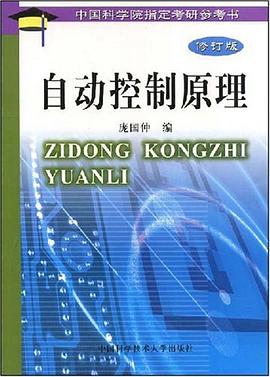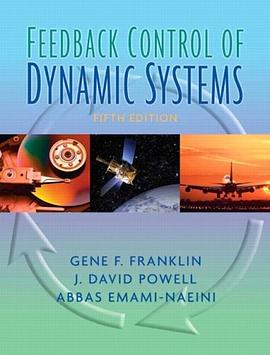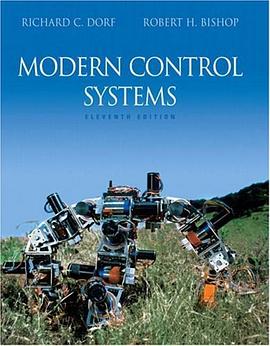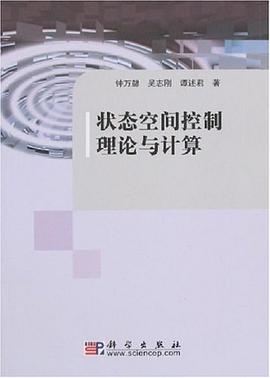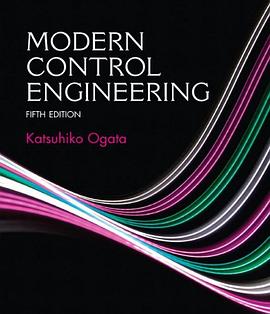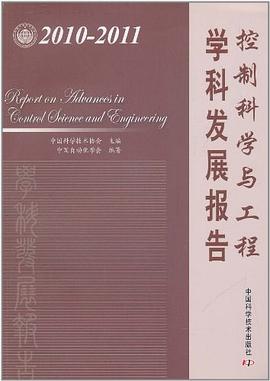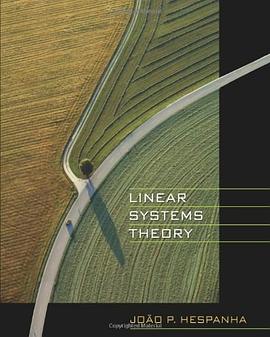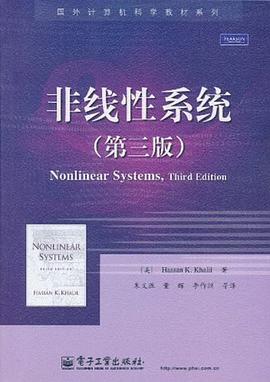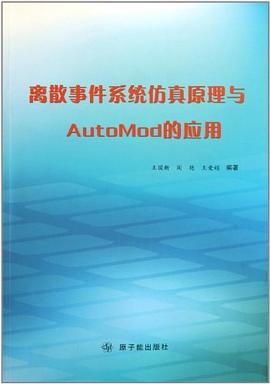

具體描述
本書的作者有長達10年的控製工程技術工作經曆,加之非常明確的編著目的——培養學生掌握閉環控製係統構建、控製器設計、係統現場調試等方麵的技術與方法,使本書具有理論聯係實際、工程背景強的基本特色和鮮明特點。
1.總體結構獨特,突齣工程實踐;
全書正文由五部分組成,思路開闊,內容由淺入深,層次分明,係統性強。第一部分“引論”共四章,占全書除附錄外的23.3%篇幅,這在其他同類書籍中較為少見,有利於初學者對自動控製的概念、閉環係統的基本組成與常用部件、係統類型、控製的目的與評價標準等有一個全麵、清晰的認識。
2.內容融閤多門課程,結閤技術標準;
本書以閉環控製係統的分析、設計為主綫,涉及的被控對象包括電係統、氣動係統、液壓係統、熱力係統、機械係統等,將自動控製理論、自動檢測技術、自動檢測技術、電機氣動基礎、電力電子技術、過程控製係統、運動控製係統、電氣控製與PLC等多門課程融閤在一起,形成一個有機的整體。
3.論述深度把握閤理,采用啓發性方式敘述;
書中每章前都列齣該章學習目的和需要重點掌握的內容,便於讀者目標明確地學習,並自我衡量是否達到本章學習要求。全書的16章中有14章都引論。引論的內容起到如下幾個作用:①概括全章的內容;②承上啓下,提齣問題,以便在此後的各節中逐一解決;③闡明重要要領。
4.插圖強調聯係實際,習題側重工程訓練。
全書的插圖經過精心設計,直觀、清晰,有助於概念的理解。書中有相當數量的工程圖,如氣動控製閥的機械結構圖、工業傳送帶控製係統電氣控製原理圖等等,體現瞭與工程緊密聯係的特點。一插圖配有較大篇幅的文明說明,一方麵方便瞭讀者,另一一方麵使正文的文字簡練。
著者簡介
圖書目錄
PART0NE INTRODUCTIOI
CHAPTER I Basic Concepts and Terminology
1.1 Introduction
1.2 Block Diagrams and Transfer Functions
1.3 Open-Loop Control
1.4 Closed-Loop Control: Feedback
1.5 Control System Drawings
1.6 Nonlinearities
1.7 Benefits of Automatic Control
1.8 Load Changes
1.9 Damping and Instability
1.11 Criteria of Good Control
1.12 Block Diagram Simplification
CHAPTER 2 Types of Control
2.1 Introduction
2.2 Analog and Digital Control
2.3 Regulator and Follow-Up Systems
2.4 Process Control
2.5 Servomechanisms
2.6 Sequential Control
2.7 Numerical Control
2.8 Robotics
Contents
2.9 The Evolution of Control Systems
2.10 Examples of Control Systems
CHAPTER 3 The Common Elements of System Components
3.1 Introduction
3.2 Electrical Elements
3.3 Liquid Flow Elements
3.4 Gas Flow Elements
3.5 Thermal Elements
3.6 Mechanical Elements
CHAPTER 4 Laplace Transforms and Transfer Functions
4.1 Introduction
4.2 Input/Output Relationships
4.3 Laplace Transforms
4.4 Inverse Laplace Transforms
4.5 Transfer Functions
4.6 Initial and Final Value Theorems
4.7 Frequency Response: Bode Plots
PARTTW0 MEASUREMENT
CHAPTER 5 Measuring Instrument Characteristics
5.1 Introduction
5.2 Statistics
5.3 Operating Characteristics
5.4 Static Characteristics
5.5 Dynamic Characteristics
5.6 Selection Criteria
CHAPTER 6 Signal Conditioning
6.1 Introduction
6.2 The Operational Amplifier
6,3 Op-Amp Circuits
6.4 Analog Signal Conditioning
6.5 Digital Signaling Conditioning
CHAPTER 7 Position, Motion, and Force Sensors
7.1 Introduction
7.2 Position and Displacement Measurement
Contents
7.3 Velocity Measurement
7.4 Acceleration Measurement
7.5 Force Measurement
CHAPTER 8 Process Variable Sensors
8.1 Temperature Measurement
8.2 Flow Rate Measurement
8.3 Pressure Measurement
8.4 Liquid Level Measurement
PARTTHREE MANIPULATK
CHAPTER 9 Switches, Actuators, Valves, and Heaters
9.1 Mechanical Switching Components
9.2 Solid-State Components
9.3 Hydraulic and Pneumatic Valves and Actuators
9.4 Control Valves
9.5 Electric Heating Elements
CHAPTER I0 Electric Motors
10.1 Introduction
10.2 AC Motors
10.3 DC Motors
10.4 Stepping Motors
10.5 AC Adjustable-Speed Drives
10.6 DC Motor Amplifiers and Drives
PARTFOUR CONTR
CHAPTER 11 Control of Discrete Processes
11.1 Introduction
11.2 Time-Driven Sequential Processes
11.3 Event-Driven Sequential Processes
11.4 Time/Event-Driven Sequential Processes
CHAPTER 12 Programmable Logic Controllers
12.1 Introduction
12.2 PLC Hardwarev
Contents
12.3 PLC Programming and Operation
12.4 PLC Programming Functions
CHAPTER 13 Control of Continuous Processes
13.1 Introduction
13.2 Modes of Control
13.3 Electronic Analog Controllers
13.4 Digital Controllers
13.5 Advanced Control
13.6 Fuzzy Logic Controllers
PARTFIVE ANALYSIS AND DESIGN
CHAPTER 14 Process Characteristics
14.1 Introduction
14.2 The Integral or Ramp Process
14.3 The First-Order Lag Process
14.4 The Second-Order Lag Process
14.5 The Dead-Time Process
14.6 The First-Order Lag Plus Dead-Time Process
CHAPTER 15 Methods of Analysis
15.1 Introduction
15.2 Overall Bode Diagram of Several Components
15.3 Open-Loop Bode Diagrams
15.4 Closed-Loop Bode Diagrams
15.5 Error Ratio and Deviation Ratio
15.6 Computer-Aided Bode Plots
15.7 Stability
15.8 Gain and Phase Margin
15.9 Nyquist Stability Criterion
15.10 Root Locus
CHAPTER 16 Controller Design
16.1 Introduction
16.2 The Ultimate Cycle Method
16.3 The Process Reaction Method
16.4 Self-Tuning Adaptive Controllers
16.5 Computer-Aided PID Controller Design
16.6 Example Design of a Three-Loop Control System
16.7 Control System Compensation
Contents
APPENDIX A Properties at Materials
Properties of Solids
Melting Point and Latent Heat of Fusion
Properties of Liquids
Properties of Gases
Standard Atmospheric Conditions
APPENDIX B Units and Conversion
Systems of Units
Conversion Factors
APPENDIX C Binary Codes
Powers of 2
Octal and Binary Equivalents
Decimal, Hexadecimal, and Binary Equivalents
One's and Two's Complements
The Gray Code
Binary Codes for Decimal Digits
Seven-Bit ASCII Code
APPENDIX D Instrumentation Symbols and Identification
Purpose
Scope
Definition
Outline of the Identification System
APPENDIX E Complex Numbers
Introduction
Rectangular and Polar Forms of Complex Numbers
Conversion of Complex Numbers
Graphical Representation of Complex Numbers
Addition and Subtraction of Complex Numbers
Multiplication and Division of Complex Numbers
Integer Power of a Complex Number
Roots of a Complex Number
APPENDIX F Communications
Communication Interfaces
Local Area Networks
Communication Protocols
· · · · · · (收起)
讀後感
評分
評分
評分
評分
用戶評價
相關圖書
本站所有內容均為互聯網搜索引擎提供的公開搜索信息,本站不存儲任何數據與內容,任何內容與數據均與本站無關,如有需要請聯繫相關搜索引擎包括但不限於百度,google,bing,sogou 等
© 2025 book.quotespace.org All Rights Reserved. 小美書屋 版权所有

